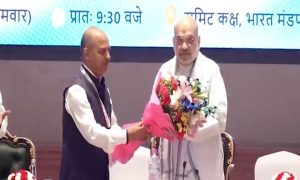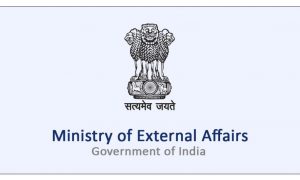The World Health Organisation team sent to China to investigate the origins of the novel coronavirus pandemic has concluded its tour without a visit to Wuhan which is hitherto largely considered to be the place of origin of the contagion. This action by the WHO team has sparked off another controversy, adding fuel to the other alleged lapses in tackling the emergence and progression of the spread of COVID-19 since early this year.
In a face-saver, the WHO spokesperson told Reuters that the team that had visited China to probe the origins of COVID-19 had “extensive discussions” and exchanges with scientists in Wuhan where the outbreak was first detected.
“The team had extensive discussions with Chinese counterparts and received updates on epidemiological studies, biologic and genetic analysis and animal health research,” WHO’s spokesperson Christian Lindmeier told reporters, saying these included video discussions with Wuhan virologists and scientists.
Interestingly, Chinese government accounts had earlier too cited Christian Lindmeier’s quote to scrub itself free of the charge that the novel coronavirus strain first appeared in China’s Wuhan, more specifically either a seafood market in Wuhan or allegedly at a Wuhan-based virus research laboratory.
On May 6 this year, Hua Chunying, a spokesperson for the Foreign Ministry of China (Director-General, Department of Information) had tweeted #WHO spokesman Christian Lindmeier said French #COVID19 case in December without the link to China “gives us a whole new picture on everything” and urged countries to retest cases of atypical pneumonia in Nov-Dec 2019.
The talks included updates on animal health research, he said. China shut down a wildlife market in Wuhan at the start of the outbreak, a day after discovering some patients were vendors or dealers. The WHO says the virus most likely came from bats and probably had another, intermediary animal “host”.
Advance Mission before the Broader Mission:
This was a three-week WHO advance mission comprising two specialists in animal health and epidemiology. The members of this mission were tasked with laying the groundwork for a broader team of Chinese and international experts that will seek to discover how the virus that causes COVID-19 jumped the species barrier from animals to humans.
The results of the WHO investigation are keenly awaited by scientists and governments around the world, none more so than Washington, which lobbied hard for the mission. The Trump administration accuses the WHO of being China-centric and plans to leave the agency over its handling of the pandemic.
WHO’s flip-flop on Wuhan as origin of COVID-19
WHO emergencies chief Mike Ryan said on Monday that surprises were possible.
“The fact that that fire alarm was triggered (in Wuhan) doesn’t necessarily mean that that is where the disease crossed from animals to human,” he said.
The contradiction with earlier report:
The WHO’s current stand contradicts its own report “Report of the WHO-China Joint Mission
on Coronavirus Disease 2019 (COVID-19)” published in February 2020. By the WHO’s own admission, the Joint Mission consisted of 25 national and international experts from China, Germany, Japan, Korea, Nigeria, Russia, Singapore, the United States of America and the World Health Organization (WHO).
In its detailed findings published here (https://www.who.int/docs/default-source/coronaviruse/who-china-joint-mission-on-covid-19-final-report.pdf), the WHO had admitted and submitted thus:
Quoting WHO report on Wuhan Seafood market as origin
COVID-19 is a zoonotic virus. From phylogenetics analyses undertaken with available full genome sequences, bats appear to be the reservoir of COVID-19 virus, but the intermediate host(s) has not yet been identified… These include early investigations of cases with symptom onset in Wuhan throughout December 2019, environmental sampling from the Huanan Wholesale Seafood Market and other area markets, and the collection of detailed records on the source and type of wildlife species sold at the Huanan market and the destination of those animals after the market was closed.
Quoting Transmission in Wuhan as admitted by WHO earlier
Early cases identified in Wuhan are believed to be have acquired infection from a zoonotic source as many reported visiting or working in the Huanan Wholesale Seafood Market. As of 25 February, an animal source has not yet been identified… At some point early in the outbreak, some cases generated human-to-human transmission chains that seeded the subsequent community outbreak prior to the implementation of the comprehensive control measures that were rolled out in Wuhan. The dynamics likely approximated mass action and radiated from Wuhan to other parts of Hubei province and China, which explains a relatively high R0 of 2-2.5.
Quoting WHO report accepted Wuhan origin, but denied community transmission threat
To date, most of the recorded cases were imported from or had direct links to Wuhan/Hubei. Community transmission has been very limited.
When will the Broader Mission commence?
US President Donald Trump and Secretary of State Mike Pompeo have publicly alleged that the pathogen likely originated in a laboratory in Wuhan, although they have presented no evidence for this and China has denied it. Some scientists have said it emerged in nature. The noted AIDS researcher David Ho had told the Voice of America (VOA) March that the coronavirus very likely originated from China and that given what researchers know about SARS, COVID-19 and coronaviruses found in other animal species, “I have very little doubt that the origin is China.”
The US had pushed for a broader mission and this just-concluded advance mission was to set the groundwork for the broader one. WHO spox Lindmeier did not provide details on the timing or composition of the broader mission. Terms of reference for the broader mission have been produced together with Chinese authorities in draft form, he said and were not yet publicly available.
If the WHO – at the behest of China – or for any other reason creates the team without the inclusion of US experts, it is bound to kick up a storm and become controversial. The degree of access granted by Beijing to any such team also remains a bigger question.
WHO found lacking at every step:
As the WHO dithered on pressing the alarm button on time, it gave the world a false sense of complacency early in the pandemic. WHO Director-General Tedros Adhanom Ghebreyesus was criticised by several nations for underplaying the contagion’s threat to mankind. He was accused of wrongly praising China’s “transparency” even as the coronavirus swept across the Chinese heartland and jumped to other nations.
There was mounting evidence that Chinese officials had silenced whistleblowers and undercounted cases, the WHO chief extolled praises of the leadership of Chinese President Xi Jinping. When the entire issue blew up into an escalating global health crisis — the world is angry that WHO’s lackadaisical response potentially spurred the virus’s spread.
China objected to the virus being named after Wuhan
As the disease was earlier being labelled Chinese virus or Wuhan virus, WHO – in February 2020 – announced that “Official names have been announced for the virus responsible for COVID-19 (previously known as “2019 novel coronavirus”) and the disease it causes. The official names are Disease: coronavirus disease (COVID-19)”
However, as it began spreading like wildfire across the world and the US, Mike Pompeo – the US Secretary of State and President Donald Trump continued to call it the “Wuhan coronavirus”. The Chinese Foreign Ministry objected to it promptly — saying the name will “stigmatize” the country and that COVID-19 should stick.
Meanwhile, Lawrence Sellin, PhD is a retired US Army Reserve colonel, who previously worked at the US Army Medical Research Institute of Infectious Diseases and conducted basic and clinical research in the pharmaceutical industry, has cited Indian scientist as claiming that “RaTG13, the bat coronavirus that China claims is the closest relative of the #COVID19 virus, might be fake and caution the scientific community “to refrain from citing the genome of RaTG13.”
Source – Reuters






















 WhatsApp us
WhatsApp us